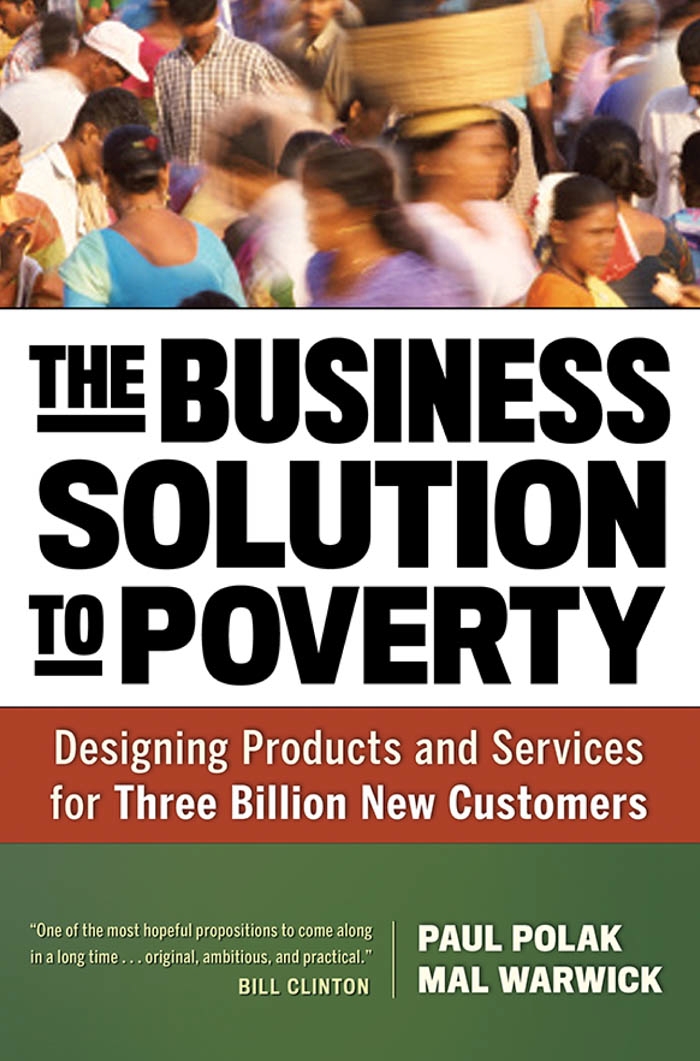The following is an excerpt from The Business Solution to Poverty: Designing Products and Services for Three Billion New Customers, a new book by businessman Paul Polak and social entrepreneur Mal Warwick. The book explains why business is better equipped to eradicate world poverty than nonprofits or governments. It also details how to design and market products that transform the lives of the world’s poor—and make a nice profit.
*** The approach we advocate to end poverty doesn’t follow a simple formula. You can’t write it all down on a prescription pad. However, it is systematic. We call it zero-based design.
The approach we advocate to end poverty doesn’t follow a simple formula. You can’t write it all down on a prescription pad. However, it is systematic. We call it zero-based design.
To understand what we mean by this term, consider the analogy we’ve based it on: zero-based budgeting. Typically, next year’s budget is simply this year’s with a few adjustments. Sometimes the process is straightforward: just increase or decrease last year’s numbers by 2 percent or 10 percent, and—voila!—you’ve got next year’s budget. By contrast, in zero-based budgeting, you start from scratch. Zero. With every line item blank, you dig as deeply as you need to dig to learn what’s really necessary and feasible.
Practically all designers set out on any assignment with a set of assumptions in mind—either a template they’ve successfully used in the past to solve a similar problem, or an existing product or service they plan to modify, or—at the very least—a conviction that they’ve run across similar challenges in the past and can rely on their own experience in addressing them. In zero-based design, none of these assumptions are acceptable.
You begin the zero-based design process from a position of assumed ignorance. Because you possess experience in, say, building homes, you might set out to establish a new business that provides healthy and comfortable housing for $2-a-day people who now live in the most rudimentary shelters. However, instead of thinking of ways to adapt an existing home design to local conditions, you assume that nothing you have previously done will be suitable. You set out instead to determine what poor people themselves believe will best meet their needs. The process entails asking a lot of questions—questions at every stage of inquiry.
There are eight keys to applying zero-based design to the conceptualization and implementation of a business that will market essential products or services to people living on $2 a day or less and be profitable enough to attract the capital necessary to reach global scale. By employing these principles in an integrated, bottom-up design process, you can fashion an enterprise that will truly help millions of severely poor people move out of poverty:
- Listening. Don’t look at poor people as alms-seekers or bystanders to their own lives. They’re your customers. Always set out by purposefully listening to understand thoroughly the specific context of their lives—their needs, their wants, their fears, their aspirations.
- Transforming the market. Think like Steve Jobs or Akio Morita (“I don’t serve markets. I create them!). Your goal is to put a dent in the universe. A transformative new market will mimic the chain reaction in an atomic explosion, releasing energy to create yet bigger explosions. With success, your business will change economic behavior, create huge numbers of new jobs, and transform the character of villages around the globe.
- Scale. Design for scale from the very beginning as a central focus of the enterprise, with a view toward reaching not just thousands or even millions of poor people but hundreds of millions. Scale isn’t mysterious; it’s fundamentally a mechanical process. You begin with a pilot project in, say, 50 villages. With success, you roll out to 50 villages per month, then to 250 per month, and later to 500 or 1,000, building on what you learn as you go. You always keep in mind that you’ve set out to design a global enterprise—a profitable and sustainable working system, not simply a product or service.
- Ruthless affordability. Design and implement ruthlessly affordable technologies and supremely efficient business processes, offering prices not just 30 to 50 percent less than First World prices but often an order of magnitude less, or 90 percent.
- Private capital. Design for a generous profit margin so that you can energize private-sector market forces, which will play a central role in expanding any venture—drawing from a pool of trillions of dollars in private capital rather than the millions typically available for philanthropic or government-sponsored programs.
- Last-mile distribution. Design for radical decentralization that incorporates last-mile (even “last 500 feet”) distribution, employing local people at local wages in a marketing, sales, and distribution network that can reach even the most isolated rural people.
- Aspirational branding. This is even more critical for $2-a-day markets than for those serving the top 10 percent. Without aspirational branding that generates in buyers’ minds an appreciation for its most widely appreciated benefits and attributes, Coca-Cola is just flavored, fizzy sugar water, and a Mercedes is only a high-priced car. Branding convinces us that paying a premium for these products will make our lives more rewarding.
- Jugaad innovation. The Hindi term jugaad connotes improvisation, working with what you have, and paying unflinching attention to continuous testing and development. A cynic might call it simply ingenuity.
Reprinted with the permission of Berrett-Koehler Publishers from the book, The Business Solution to Poverty: Designing Products and Services for Three Billion New Customers, by Paul Polak and Mal Warwick.
